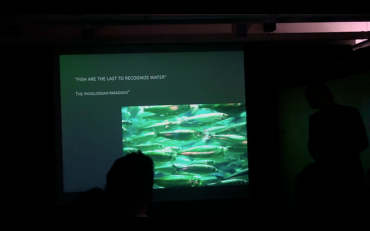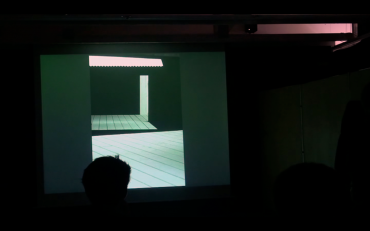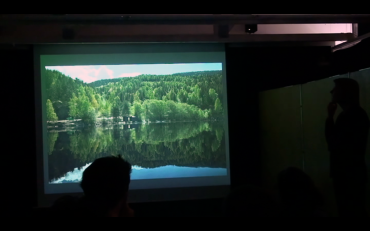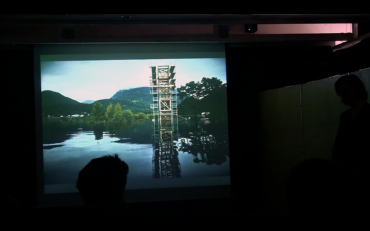
Panglossian Paradigm - Fish are the last to recognize water

Amanogawa Bridge, Hokkaido prefecture, Japan, 2007

Into the Landscape, Seljord, 2009

Seljord Lookout Point, 2011
16.7.2014 – Issue 13 - Water – Sauter Florian, Eggertsson Dagur – Studio
Handmade? - or The Beauty of the Small
Lecture by Dagur Eggertsson
One definitely brings a lot of one‘s practical experiences into architecture, a lot of one‘s childhood memories, one‘s experiences throughout life. You are constantly sampling the environment and understanding closely the space and content of your environment. As in our case, when coming from different parts of Scandinavia, when you have so much of water around you, you get blind of it and take it for granted. I think you don’t really think too much about it: “Fish are the last to recognise water.” It’s called the Panglossian Paradigm. When people are constantly in a state of mind, they don’t recognise that they are in that specific state. But when you loose this part of your existence, then you realise its presence. For that reason, we are always trying to use ‘visitor’s eyes,‘ like we say in Iceland; as if we are seeing things for the first time in order to get rid of this blindness to the surroundings.
Amanogawa Bridge is probably the first project we did after we studied. It’s a very low budget project in the north of Japan, Hokkaido, which has a history a bit independent of Japan, because it was for centuries occupied by indigenous people. Amanogawa means the “water road“. It is the name of the main road. We chose a site next to the creek. It was running slowly through a garden with sculptures. Our goal was to create a place in the garden for people to have a rest and experience nature. Something with the sound of the river and the light through the woods was suggesting the site. Very simple, basic architecture. It’s aiming to slow you down; helping you to dis- and reconnect with the surroundings.
This is a project in Seljord, Norway. It is a place where they have a tale about a sea serpent, and there is a lot of tourism based directly on these crazy stories about this animal scaring the people around the lake. In that sense, our project was about connecting with the invisible rather than the physical landscape; somehow to connect to a part of the landscape which is living more in the minds of people rather than what happens in real life. We made a proposal for a watch tower, which kind of meant to look down at the sea serpent that you normally don’t see. They liked our sketches, and invited us to give a workshop. We did three different projects, all connected to water: the first one was a sauna, of course; and the second one a fishing pond. We chose the least beautiful part of the southern lakeshore, which was this crack between two rocks. Instead of occupying this beautiful spot on the stones next to it and surrounded by forest, we instead made a connection between the two sides. The third one was in the mountain top overlooking the lake where we decided to frame the main view and create a protected spot where you could settle and have a barbeque. Finally they also decided to build the tower. After one month of building, the weather was creating all sorts of problems: The rain was not only making the earth wet, but it was making the rivers grow larger than you had ever seen them before, until the constructors had lastly to arrive by boat.
Download article as PDF

